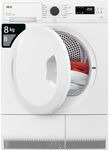Buying Guide for the Best Condenser Tumble Dryers
When choosing a condenser tumble dryer, it's important to consider your specific needs and the features that will best suit your lifestyle. Condenser dryers are a great option if you don't have access to an external vent, as they collect moisture in a tank that you can easily empty. To make the best choice, you'll need to think about the size of your household, the space you have available, and the types of fabrics you typically dry. Understanding the key specifications will help you find a model that offers the right balance of efficiency, capacity, and convenience.CapacityCapacity refers to the amount of laundry a dryer can handle in one cycle, usually measured in kilograms. This is important because it determines how much laundry you can dry at once, which can save time and energy. Smaller households or those with limited space might opt for a dryer with a capacity of 6-7 kg, which is suitable for light loads. Medium-sized households might find a 7-9 kg capacity more appropriate, while larger families or those who frequently wash bulky items like duvets should consider a dryer with a capacity of 9 kg or more. Choose a capacity that matches your typical laundry load to ensure efficient drying.
Energy EfficiencyEnergy efficiency is a measure of how much electricity a dryer uses to dry clothes. It's important because more efficient models can save you money on your energy bills and are better for the environment. Energy efficiency is usually rated from A+++ (most efficient) to D (least efficient). If you use your dryer frequently, investing in a model with a higher energy efficiency rating can lead to significant savings over time. Consider how often you use your dryer and balance the upfront cost with potential long-term savings.
Drying ProgramsDrying programs are the pre-set options that control how the dryer operates, such as the temperature and duration of the cycle. This is important because different fabrics require different care to avoid damage. Basic models may offer a few standard programs, while more advanced models provide a variety of options for specific fabrics like wool, delicates, or sportswear. Consider the types of clothes you typically dry and choose a dryer with programs that match your needs. If you have a diverse wardrobe, a model with more specialized programs might be beneficial.
Noise LevelNoise level indicates how loud the dryer is during operation, measured in decibels (dB). This is important if your dryer is located in a living area or if you have a preference for quieter appliances. Dryers typically range from about 60 dB to 70 dB. If noise is a concern, look for models that are specifically designed to operate quietly. Consider where your dryer will be placed and how much noise you are willing to tolerate during its operation.
Sensor DryingSensor drying is a feature that automatically detects the moisture level in the clothes and adjusts the drying time accordingly. This is important because it prevents over-drying, which can damage fabrics and waste energy. Models with sensor drying can be more efficient and convenient, as they stop the cycle when clothes are dry, saving time and energy. If you want to ensure your clothes are dried optimally without constant monitoring, look for a dryer with this feature.
Water Tank CapacityWater tank capacity refers to the amount of water the dryer can collect from the clothes during the drying process. This is important because a larger tank means you won't have to empty it as frequently. If you do a lot of laundry or prefer less maintenance, a dryer with a larger water tank might be more convenient. Consider how often you are willing to empty the tank and choose a capacity that aligns with your usage habits.
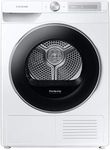
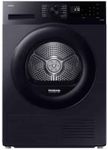
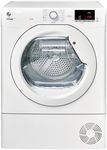
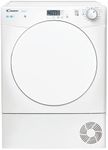

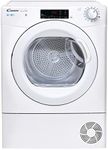


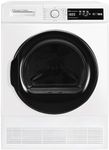
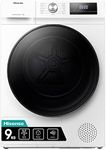
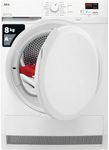
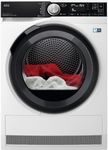

![Candy CSOEC10TG 10kg Condenser Tumble Dryer, Sensor Dry, WiFi, White [Energy Class B]](https://images-proxy.bestreviews.guide/tKVVJC05_8i8LkEZTM7N9IdTpGA=/0x150/https://m.media-amazon.com/images/I/410lKkoVvjL._AC_CX679_.jpg)
